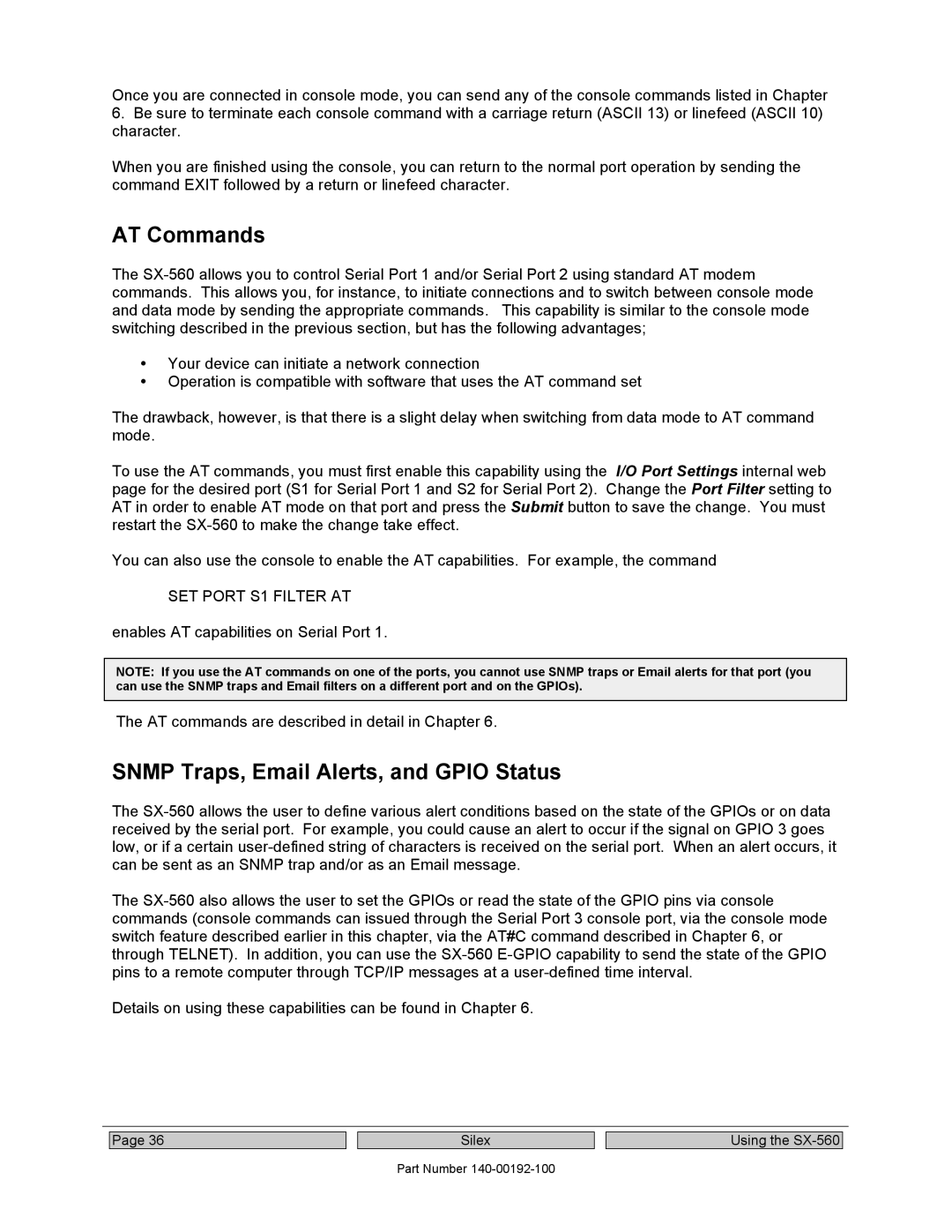
Once you are connected in console mode, you can send any of the console commands listed in Chapter
6.Be sure to terminate each console command with a carriage return (ASCII 13) or linefeed (ASCII 10) character.
When you are finished using the console, you can return to the normal port operation by sending the command EXIT followed by a return or linefeed character.
AT Commands
The
•Your device can initiate a network connection
•Operation is compatible with software that uses the AT command set
The drawback, however, is that there is a slight delay when switching from data mode to AT command mode.
To use the AT commands, you must first enable this capability using the I/O Port Settings internal web page for the desired port (S1 for Serial Port 1 and S2 for Serial Port 2). Change the Port Filter setting to AT in order to enable AT mode on that port and press the Submit button to save the change. You must restart the
You can also use the console to enable the AT capabilities. For example, the command
SET PORT S1 FILTER AT
enables AT capabilities on Serial Port 1.
NOTE: If you use the AT commands on one of the ports, you cannot use SNMP traps or Email alerts for that port (you can use the SNMP traps and Email filters on a different port and on the GPIOs).
The AT commands are described in detail in Chapter 6.
SNMP Traps, Email Alerts, and GPIO Status
The
The
Details on using these capabilities can be found in Chapter 6.
Page 36
Silex
Part Number
Using the
